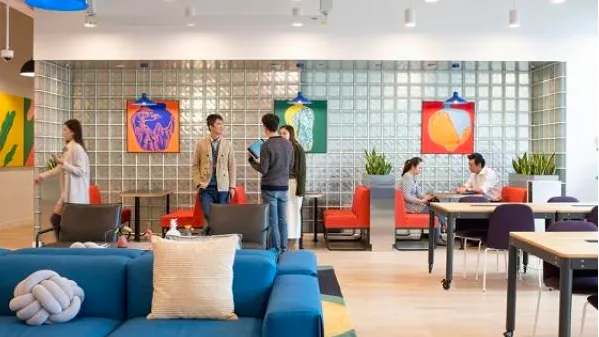
The key to effective hybrid workplaces in APAC revealed
Over 80% of firms in APAC are adopting a hybrid programme.
Hybrid working will remain core to organisational strategies in Asia Pacific, but more efficient office utilisation will become a bigger focus for corporations adapting to new working models. According to an analysis by JLL, while 84% of organisations in Asia Pacific are adopting a hybrid programme, the region is also leading in the return to the office, with the highest proportion (22%) of employees spending an average of five days in the office globally.
Understanding how offices are utilised will be key to planning successful hybrid workplaces. JLL’s new 2024 Global Occupancy Planning Benchmarking Report outlines how hybrid programmes are actively shifting to accommodate a greater variety of work activities and how companies can look at occupancy planning and workplace design more holistically to reflect these changes. Leveraging JLL insights and accumulated data from more than 85 organisations representing nearly 625 million square feet across 12 industries globally, the benchmarking report offers best practices for how companies can use their workspace as an asset to attract and retain top talent.
“As hybrid working and return to office programmes mature, employers are now looking to develop more regularity in attendance and utilisation. Being able to plan and manage fluctuating weekly occupancy patterns will be crucial to the success of such workplaces,” said Susheel Koul, CEO, Work Dynamics, Asia Pacific, JLL. “By investing in new technologies, leveraging utilisation data and continuously improving the scale and accuracy of utilisation for workplace management, companies can ensure they are effectively reflecting the workplace’s changing needs.”
Asia Pacific is utilising office space most effectively across the world
Metrics such as utilisation and workplace density inform changes across workspaces, including the increasing number of shared and open workstations and focus spaces, and decreasing number of dedicated and enclosed workstations and collaboration spaces.
Asia Pacific leads the way in effective office space utilisation. In terms of utilisation metrics, Asia Pacific has the lowest discrepancy between the target utilisation rate of 73% and average utilisation rate of 55%. Utilisation has become the most important metric for organisations in 2024, providing a temporal measurement useful for hybrid workplaces and shared seating policies that vacancy cannot. Workplace density wise, Asia Pacific has the lowest density globally, where each seat takes up an average of 12 Rentable Square Metres. In North America where density is highest across the world, each seat takes up an average of 19 Rentable Square Metres.
New technology to close the office utilisation gap and enhance hybrid work experience
As the region continues to narrow its office utilisation gap, technology can help close this gap through integrated occupancy sensors for workstations and collaboration spaces, real time analytics and AI capabilities to unlock efficiencies.
Technology investments in areas such as implementing IT modifications for hybrid working, and enhanced conference room technology allows organisations to adapt physical spaces for hybrid programmes. With over 90% of occupiers in Asia Pacific willing to pay a premium for tech-enabled spaces, investing in integrated and improved technology for hybrid working will continue to be a focus for commercial real estate leadership.



















 Advertise
Advertise




